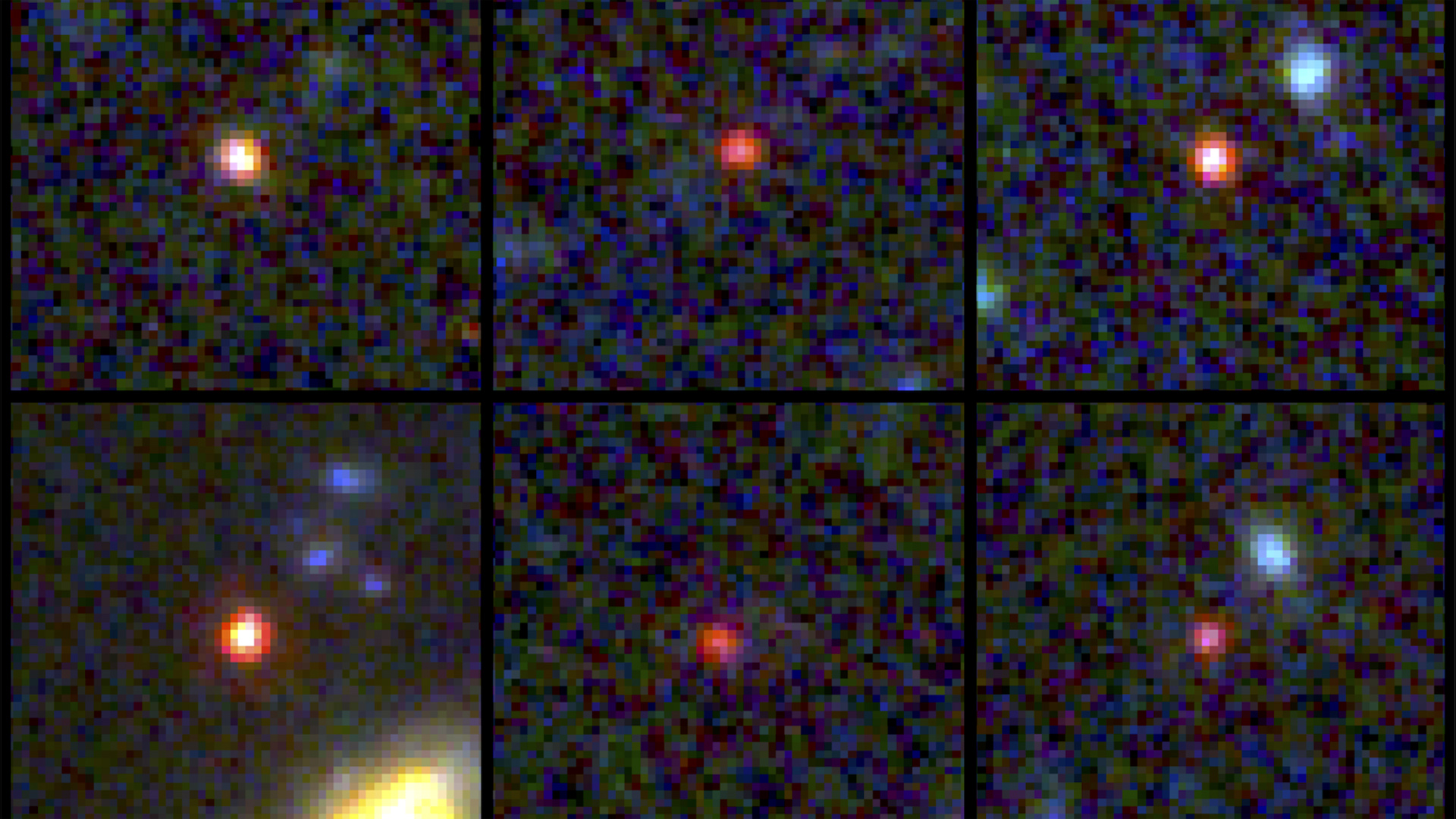A brand new mannequin that implies darkish vitality — the mysterious pressure driving the acceleration of the universe’s growth — rose early within the cosmos might treatment two of probably the most urgent astrophysical complications.
Considered one of these complications is the “Hubble stress,” which refers to a longstanding obvious disparity between the measured fee at which the universe is increasing. The opposite is the unusual detection of shiny galaxies within the early universe, throughout a time when scientists had thought the cosmos needs to be sparsely populated. The latter drawback started to emerge after the James Webb Area Telescope (JWST) began making observations of the early and distant universe.
The brand new mannequin is the brainchild of a crew of scientists from the Massachusetts Institute of Expertise (MIT) and the College of Texas at Austin. They assume the important thing to those two puzzles is an additional ingredient within the cosmic pudding: early darkish vitality.
In precept, early darkish vitality ought to have been just like the darkish vitality driving the growth of the universe right this moment. The distinction, nevertheless, could be that, whereas trendy darkish vitality started performing round 4 billion years in the past, early darkish vitality would have appeared briefly within the early cosmos simply hundreds of years after the Large Bang. Then, it will have disappeared completely.
Associated: ‘Hubble hassle’ might deepen with new measurement of the universe’s growth
“You’ve these two looming open-ended puzzles,” crew member Rohan Naidu, a postdoctoral researcher at MIT’s Kavli Institute for Astrophysics and Area Analysis, stated in an announcement. “We discover that, in reality, early darkish vitality is a really elegant and sparse answer to 2 of probably the most urgent issues in cosmology.”
Attending to work on the Hubble stress
The so-called Hubble stress arises from the truth that there are two main methods of measuring the “Hubble fixed,” which is the speed at which the universe expands, and so they do not agree.
One technique seems at objects within the native universe like Sort Ia supernovas, which astronomers name “customary candles” that can be utilized for cosmic distance measurements as a result of their gentle output is so uniform. The opposite method includes taking observations of the distant (and subsequently early) universe, then calculating how briskly the universe is increasing by deduction.
There’s a hitch, although (is not there at all times?). These strategies ship completely different values.
Early darkish vitality might resolve that, the crew behind the brand new analysis believes. As an accelerating pressure activated just some thousand years after the Large Bang, this substance might have acted towards the pressure of gravity. That will imply a mismatch in values might come up from a failure to think about early darkish vitality when calculating the Hubble fixed from observations of the early universe.
“Early darkish vitality is one doable addition to the usual cosmological mannequin that may protect its many successes and resolve the Hubble stress,” crew member Michael Boylan-Kolchin, a professor of astronomy at The College of Texas at Austin, stated within the assertion.
What about that second drawback that actually started to manifest when the JWST discovered early galaxies virtually as massive because the Milky Approach within the early universe?
Vivid galaxies inflicting complications? Attempt early darkish vitality!
This drawback stems from the truth that it ought to have taken billions of years for hydrogen and helium gasoline to condense and kind stars in volumes nice sufficient to kind massive and shiny galaxies just like the Milky Approach.
But, in 2023, the JWST noticed a stunning variety of massive and shiny galaxies simply 500 million years after the Large Bang, when the universe was solely round 3% of its present age of 13.8 billion years.
“The intense galaxies that JWST noticed could be like seeing a clustering of lights round massive cities, whereas concept predicts one thing like the sunshine round extra rural settings like Yellowstone Nationwide Park,” crew chief Xuejian (Jacob) Shen, a Kavli postdoc at MIT stated within the assertion. “And we don’t anticipate that clustering of sunshine so early on.”

Quite than throw out all of our fashions of galactic evolution, nevertheless, the crew suggests simply including early darkish vitality to the fashions.
Creating their very own mannequin of galaxy formation that took this under consideration, the crew discovered the identical early darkish vitality ingredient that appeared to alleviate the Hubble stress additionally recommended the formation of huge, shiny galaxies within the sort of numbers the JWST is observing at current.
Nonetheless, this did require the researchers to tamper with a few of the universe’s cosmological parameters and different celestial elements, like the amount of darkish matter within the universe and the density of the cosmos shortly after the Large Bang.
It’s unclear simply how early darkish vitality might have led to the early formation of huge galaxies within the toddler universe — but, the truth that this mannequin might kill two cosmic birds with one stone means the crew thinks it is value pursuing.
“The truth that one mannequin can clarify these two unrelated points makes it intriguing and value pursuing in additional element,” Boylan-Kolchin concluded. “By getting extra knowledge with JWST and learning the oldest gentle within the universe in additional element, we should always truly know if early darkish vitality is the best reply throughout the subsequent 12 months or so, which is de facto thrilling.”
The crew’s analysis was revealed on Sept. 13 within the journal Month-to-month Notices of the Royal Astronomical Society.





